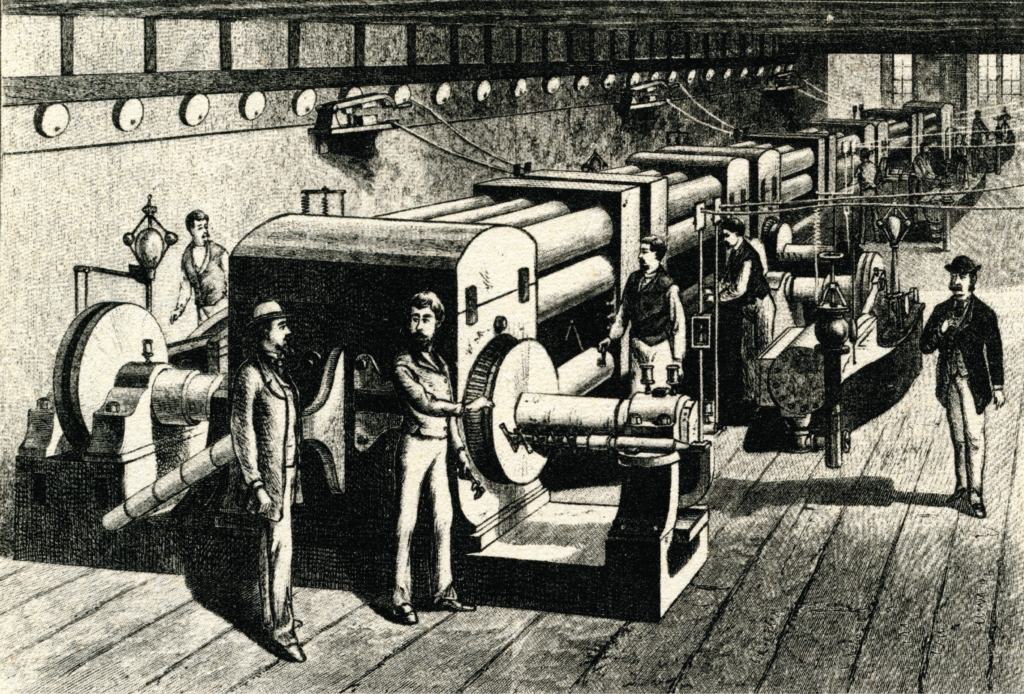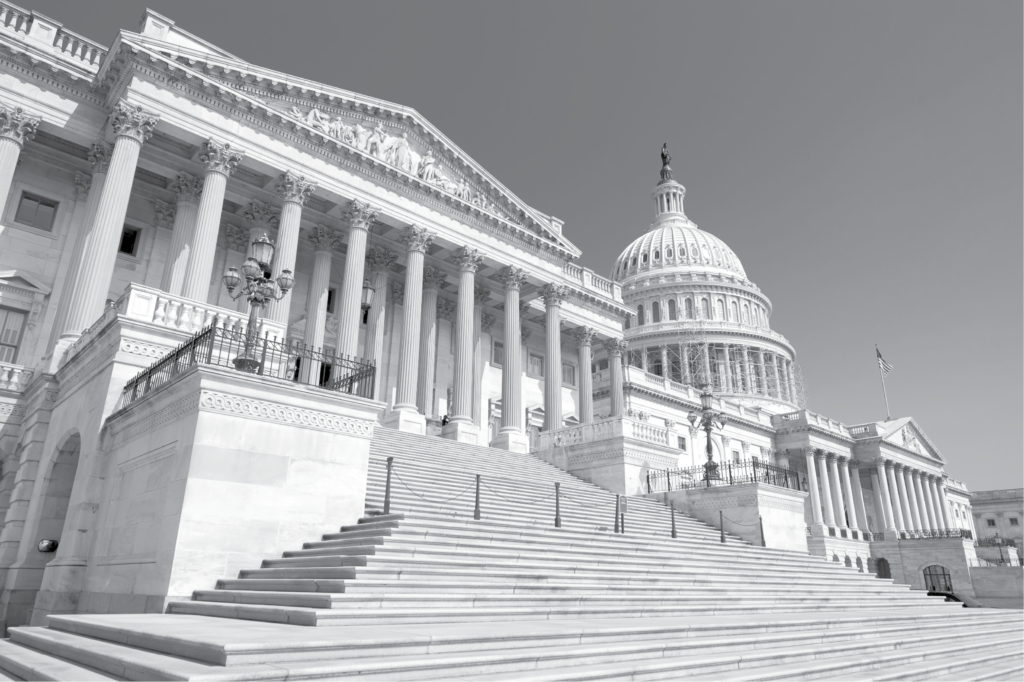
Kranzberg’s Fifth and Fourth Laws
Technology’s Stories vol. 6, no. 4 – DOI: 10.15763/jou.ts.2018.12.20.02
PDF: Schaefer_Coopersmith_Kranzberg Fifth and Fourth Laws
Kranzberg’s Fifth Law
By Dagmar Schaefer
“All history is relevant, but the history of technology is the most relevant.”
The farmer and the frog: or how Chinese farmers know all about Kranzberg’s Fifth Law.
Before I even knew what the history of technology was, I learnt from a farmer and some frogs what the relevance of history is, and that the history of technology matters most. I had just moved into the dormitory of Zhejiang University in lovely Hangzhou, a small town in the People’s Republic of China in 1987 and had taken my first stroll through the rice fields outside the campus when a farmer asked what I—a white foreigner—was doing there. I told him I had come to Hangzhou to study Chinese history, which he reacted to derisively: “this is history you cannot learn,” he commented, “this history is in the place.” Three days later I passed him again, this time to ask about the frogs in the rice fields that had croaked all night: “When will they stop?” He looked askance at me and said again: “this is history you cannot learn, this history is in the place.”

Figure 1. Hangzhou in the early evening. Licensed from Adobe Stock.
The incident conveys what I believe mattered most to Dr. Melvin Kranzberg when he formulated his Fifth Law in response to students’ general disinterest in history, in stating a general rule. He wanted to promote the relevance of history by showing the technological element more clearly. He claimed that history includes technology because culture requires technology. Whatever is going on at any given moment is not independent of history. In their study of a mine crisis in the US, Steve Kroll-Smith and Stephen R. Couch noted, “It is the past that shapes the patterns in which a community responds to crisis, the resources available for response, and the culture that interprets crisis and channels the reaction” (What is a Disaster? 1991: 13). It is the memory of the past that helps us to anticipate what will come next, acting as an empirical repository of data, structures, causalities and events, as Jan Assman (Das kulturelle Gedächtnis 2007, 2011) has repeatedly reminded us. The salience of history is proportionate to a specific situation and ingrained in the place. A sociologist would comment on the significance of social relations for keeping such a history alive, to ensure that the place remains functional, the rice fields rich and the people fed. A historian of technology may add, that once established though, history also becomes an active force in itself. In the farmer’s behavior, the structure of land and the frogs’ lifecycle, history loads the dice in favor of a particular pattern of social and cultural responses, which keep those structures alive.
Of course, history is a complicated concept and, as described above, can appear all inclusive. From the farmer’s viewpoint, knowing history means doing it and, only then, being able to grasp it inclusively, in its totality. There is a history of traditions that, in the Latin sense of the trader, transmits; there is history as harbinger, that is history as an interpretive template for present action or, at least, its anticipation; and lastly, there is history as invention, including technology, a certain version of the past crafted for specific purposes to guide or legitimate a present course of action or evaluate existing circumstances.
Allow me to return to my example of the frogs to explain why the history of technology matters most. Put simply, it is obvious that the frogs are there because rice is there and the rice is wet. In order to keep the mosquito population down and generate another source of income, farmers pour frogspawn into the paddy fields in spring, after they have been watered, then harvest the grown frogs and eat them together with the rice. Farmers in this region have continued this cycle since at least the seventeenth century, if not earlier, because they can rely on it, feeling certain about what will happen. The temporality of materials matters as well as how relationships are created within and across time, because history is implanted into the landscape. Technology configures the social relations in that work, since the landscape needs to be kept alive through the seasonal changes, memory of fertilizers, frog breeding, and rice planting. If there had ever been a moment of the absence of history, the farmer would have had to start all this again on his own—discovering and selecting which rice seeds to plant, learning how to make and use a hoe, work the soil, water the fields, construct the dikes and so on.

Figure 2. Rice field in southern China. Licensed from Adobe Stock.
History, the trader, conditions memory. Harbinger history facilitates and enables. It also empowers people. Furthermore, it can turn (or be turned) into a technological determinism, as it carries assumptions that the past must be relived, a point that Kranzberg carefully circumnavigated when pointing out that a system is dependent on its constituent elements. New developments and techniques can jeopardize this very delicate balance of growth and life. Sometimes it even ends in a particular version of living, which actors argue are inevitable environments that cannot be challenged. Trader and harbinger histories are never far apart.
Finally then, one cannot but think about the three versions of history in ocular terms, as lenses through which to see the varied ways the present is joined to the past. The one point the farmer was really sure about was that the linkage between the history of his land and the technologies he knew and used gave him his identity and pride in his labor. Although he may not have been aware of it, his pride partly rested on the historical work done by a white foreigner. It was Joseph Needham, grand seigneur of Chinese science, whose large-scale collaborative project Science and Civilisation (1954-2016) contributed to a global awareness of the significance of China’s history to the rest of the world, attributing utmost relevance to the history of technologies such as rice farming. Against such positive narratives, we can situate the novelistic approach of George Orwell, who illustrated the power of history’s relation to technology and technology’s relation to history equally—and not without reason—in the allegorical scenario of pigs taking over control in Animal Farm (1945).
One can also certainly perceive the utmost present relevance of history and the utmost relevance of the history of technology by pinpointing the current omnipresence of computers, architecture, infrastructures, transportation systems, or artificial intelligence as the technical structures that create, nurture and yield personal, social and political realities and ideals. Such illustrations of Kranzberg’s Fifth Law might remind us how dangerous it is to think that technologies are inevitable, or that technologies or history are invincible, because such examples also remind us that both history and technology are vulnerable. Since facts are human-made, they can be substituted or drowned by other facts, and reinterpreted. Frequently technology contributes to these things too, since nobody wants to be a considered a Luddite. In other words, history is not an infallible representation of the past. It is an argument about the past shaped by technological means.
Instead of ending with a note on the multiple beautiful and frightening implications of Kranzberg’s Fifth Law in our contemporary technological world, however, it might be worthwhile seeing how my encounter with the farmer and the frogs ended. Did I tell you that when I first asked the farmer about the frogs I had not been in a particularly good mood? I had been unable to sleep properly for three nights in row because, as dusk fell, thousands of frogs would start croaking. Lying awake, I had imagined all kinds of wonderful technologies and tools that could be used to silence the frog chorus. I dreamt of simple devices like functioning ear plugs or efficient frog traps; poisons that would silence the creatures and keep the rice pristine; armies equipped with large nets. I imagined importing German-insulated housing technologies and double-glazed windows into 1990s China, or creating a sound system that would muffle the ambient sounds (I was too late, the first noise-cancelling headphones were produced in 1989 by Bose). As none of those were available to me at the time, and I lacked the power to implement such schemes, I eventually started doing what the farmers had done for centuries. As the rice in the fields ripened and was harvested, I went to a restaurant where they served the frogs in sauce. There I enjoyed the most satisfying meals of my life.
Dagmar Schaefer is Director of Department 3, “Artefacts, Action, and Knowledge” at the Max Planck Institute for the History of Science. She is also Honorary Professor, History of Technology, Technical University, Berlin; Adjunct Professor, Institute of Sinology, Freie Universität, Berlin; and Guest Professor at the School of History and Culture of Science, Shanghai Jiao Tong University, and Tianjin University (2018–2021).
Kranzberg’s Fourth Law
by Jonathan Coopersmith
“Although technology might be a prime element in many public issues, non-technological factors take precedence in technology-policy decisions.”
Calling these six statements laws was more Mel’s marketing than a claim to universality (“Kranzberg’s Laws” sounds much more impressive than “Mel’s Pretty Nifty Ideas”), but they still serve as a useful guide for thinking about the history of technology – and its relation to the larger field of history.
The fourth law, “Although technology might be a prime element in many public issues, non-technological factors take precedence in technology-policy decisions,” seems a statement of the obvious as the frustrated promoters of the proposed second Hudson River tunnel can testify. Indeed, not only does the fourth law remains accurate, its relevance has increased with the rise in fact-free decisions and the directed as well as unintended rise of fake and misleading material in the infosphere.

Figure 1. View of New Jersey from the Hudson River. Licensed from Adobe Stock.
Historically, engineers proposed while executives in the C-suite and politicians decided. The technologists were advisors, not deciders. And this is as it should be in a democracy, a point Mel emphasized. Think of the fourth law as a variation of Georges Clemeneau’s “La guerre! C’est une chose trop grave pour la confier à des militaires” (“War is too serious a matter to entrust to military men”). In the United States, military officers may propose and do enact policy, but the president, his Secretary of Defense and the rest of the cabinet made the actual decisions. In priority, the Secretary of Defense is third in line of secretaries to succeed the president behind State and Treasury. Civilians, not soldiers, determine military policy.
And yet. Engineers and scientists believe their perspective and expertise could and should lead to better decisions in S&T policy but also areas affected by S&T. As Kranzberg states, these men and women contribute but do not decide.
Non-technological factors dominate decisions for several reasons. First is the reality that there are often many technological paths and conflicting priorities for specific goals, often with conflicting technical experts. You want to electrify your city in the 1890s? AC or DC? You want non-carbon-based energy for your city in the 2020s? Solar or wind or nuclear? Grid or micro-grid? The engineering community – or communities – do not speak with one voice.

Figure 2. Edison power plant, 1880s. Licensed from Adobe Stock.
Second is the reality of economics. No one ever has enough resources to act as freely as desired. Nuclear may be “the best” technical choice for baseload non-carbon electricity generation but its economics remain daunting. Corporate and government budgets (or their lack) effectively set and reify policy. Their time-scales, often measured in years or election cycles, do not always support rational planning.
Third is the reality of groups, stakeholders, and constituencies with different or opposed agendas. As a rule, YIMBY (Yes In My BackYard – groups advocating denser housing in areas with severe housing shortages) is less powerful than NIMBY (Not In My BackYard – yes, perhaps we should have new facilities for X, whatever X is but not near me) and sometimes BANANA (Build Absolutely Nothing Anywhere). DRAT (Don’t Raise Any Taxes) may be good for electioneering but bad for investing in civil infrastructure. Such groups are often better organized politically than engineers promoting specific projects – especially if the engineers are public employees, limiting their ability to influence decisions.
As Kranzberg noted, “there is the recognition that technological developments frequently have social, human, and environmental implications that go far beyond the intention of the original technology itself.“ The decisions of engineers, based solely on economic and technical criteria, do not affect everyone equally. The rise of the environmental justice movement illuminates how technological decisions – such as the siting of petrochemical plants or waste dumps – have disproportionate adverse consequences among different groups, especially the poor and minorities.
As the current debates about the responsibility of firms and government to regulate, police, or otherwise act to promote and protect citizens’ and their data on social media and the internet indicate, technologies have consequences (which why we accept access to fresh water and electricity as givens). The current public debates about privacy-data ownership are both similar across cultures and grounded differently: The European Union’s precautionary principle and General Data Protection Regulation (GDPR), the British duty of care, the more laissez-faire American approach, and the state-centric Chinese censorship system create different legal, regulatory, and mental frameworks for these issues.
Kranzberg’s fourth law suggest that historians should focus on larger questions of who makes decisions, how are they made and how well they are made. “Well” may mean not just results, but also process – e.g., rigor, openness, and inclusion? If the goal, to quote Aaron Burr in Hamilton, is “to be in the room where it happens,” what approaches have S&T advocates taken? Of three approaches – creating systems of providing good advice to decision-makers, more engineers as decision-makers, and improving the overall state of public STEM knowledge, the first is the most common and best studied by historians.
In the last few decades, a solid field of S&T policy studies has developed worldwide. The evolution of self-description from science policy to science and technology policy to science, technology and innovation policy shows the evolution of the field. Governments have institutions; academics and think tanks have centers, majors, and conferences; societies place fellows temporarily in government; and media have dedicated blogs and newsletters. In short, here is an area ripe for historical analysis.
Ann F. Friedlaender, Dean of School of Humanities and Social Science at MIT neatly encapsulated the challenge of the second approach in 1987, saying ”Too many M.I.T. graduates end up working for too many Princeton and Harvard graduates.” The institute’s solution consisted of expanding undergraduate humanities education, the value of which STEM enthusiasts often underrate.
What is the background of decision-makers? Technocratic states tend to have more engineers in power than democracies, but decisions are not necessarily better, tending to promote heavy industry and growth over improving the quality of life of citizens, military over civilian needs and desires, and centralized over local concerns. Absent political feedback, centralized states tend to downrate environmental protection versus economic growth measured in industrial quantities.
In November 2018, 7 of the 49 candidates with S&T backgrounds won election to the U.S. House of Representatives, a small fraction of over 200 scientists and engineers who entered primaries and the thousands who considered running for an elected office. These numbers are major increases over previous decades. All the successful candidates emphasized their S&T backgrounds but made their primary focus the concerns of their districts. Will they make a difference? In how they think? In the authority/legitimacy of what they argue/do? Let’s see.

Figure 3. Stairs to the House of Representatives. Licensed from Adobe Stock.
Few engineers are elected representatives. Yet the best engineers are politicians, creating a consensus among related and often opposing concerns. What is an iPhone or a highway but a compromise, ideally elegant, among competing objectives such as cost, maintenance, location, and manufacture?
Technology promoters are successful politicians, creating coalitions, gathering support, responding to opponents, publicizing and propagandizing, and securing resources. Whether a canal spanning New York in the 1810s, metal airplanes in the 1930s, or fax standards in the 1980s, its genesis spanned decades and many previous failures. One job for historians of technology is to analyze not just what happened but what did not.
Concepts are universal; approaches, priorities, environments and implementation are not. This provides fertile ground for historians of technology, especially in electrification as fine studies looking at different countries and regions illustrate.[1]
Kranzberg’s fourth law tells us that the S&T community, like other groups, are not automatically in the room where it happens. For engineering, that can be frustrating. For societies, that is not probably for the better. For historians of technology, that provides the opportunity to place technologies in their broader societal context, replete with the messiness and inconclusiveness of the political process.
Jonathan Coopersmith is Professor of History at Texas A&M University.
[1] See, for example, session 25, To Electrify or Not to Electrify: Examining Electrification Options and Trajectories, in the 2018 SHOT conference (https://www.historyoftechnology.org/wp-content/uploads/2018/10/SHOT-2018-Pogramme-final.pdf).
***
Editor’s Note: These essays are drawn from the roundtable plenary “Kranzberg’s Laws at Sixty”, held at the Society for the History of Technology (SHOT) Annual Meeting, October 11, 2018 in St. Louis. 2018 is the sixtieth anniversary of the founding of SHOT, and Melvin Kranzberg, a seminal figure in the emergence of both SHOT and the history of technology as a discipline. The article in which Kranzberg’s Laws first appeared is: Melvin Kranzberg, “Technology and History: “Kranzberg’s Laws”, Technology and Culture 27, no. 3 (1986): 544-560.You can find it at http://www.jstor.org.
To learn more about Melvin Kranzberg see Robert C. Post. “Chance and Contingency: Putting Mel Kranzberg in Context.” Technology and Culture 50, no. 4 (2009): 839-872. Your can find this at Project Muse https://muse.jhu.edu/.
